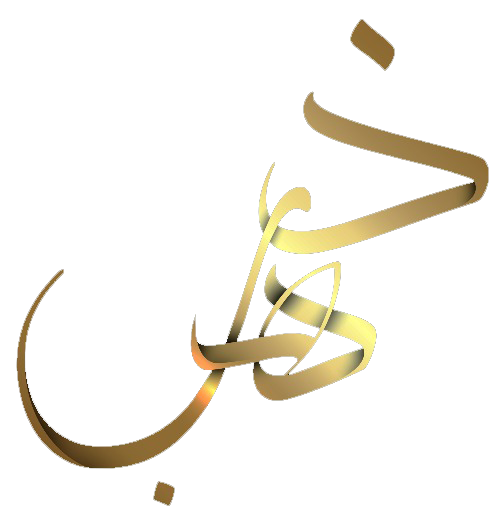Our Honey
Home / Our Honey

Burzansky honey is produced by wild “Apis mellifera mellifera” honey bees, a unique species native to the Republic of Burzyan , located in the Ural Mountains of Russia

This honey is collected from the pristine forests of the burzyan Ural region, specifically from the protected Shulgan-Tash Nature Reserve — a UNESCO Biosphere Reserve known for its rich biodiversity and ancient beekeeping traditions
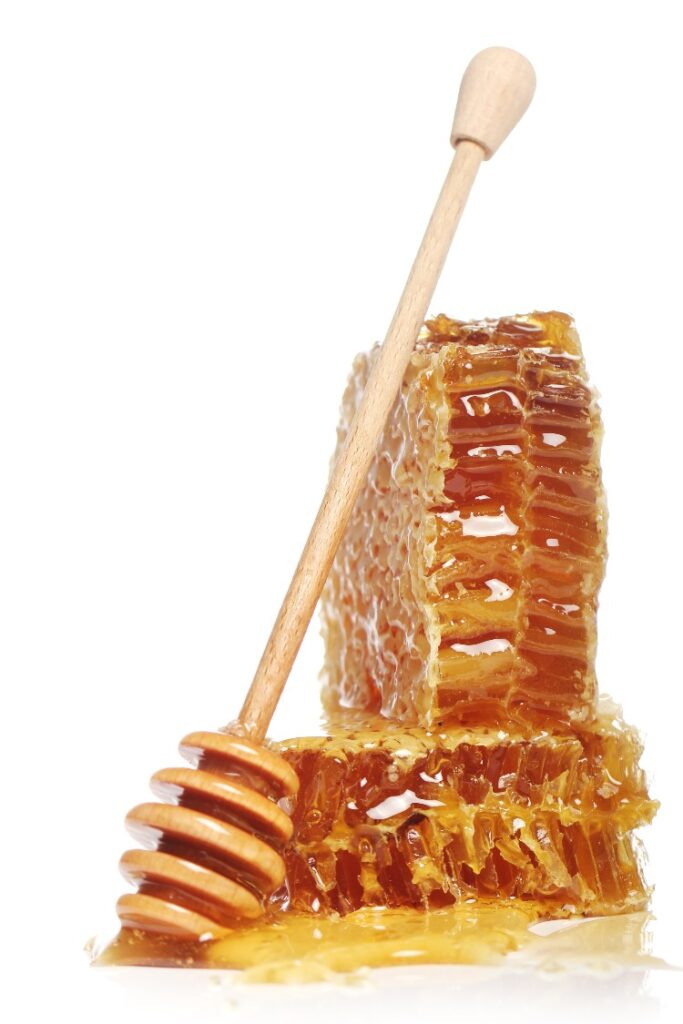

Collected from tree hives using ancient methods by the Burzyan’s people—traditional forest beekeepers whose name means “bee head keeper”—this honey preserves centuries of natural beekeeping heritage.

Burzansky Honey has earned more than 50 gold medals at international exhibitions, including the famous International Green Week in Berlin.
Despite its high quality and global recognition, it is still not widely available in world markets, making it a rare and valuable find.
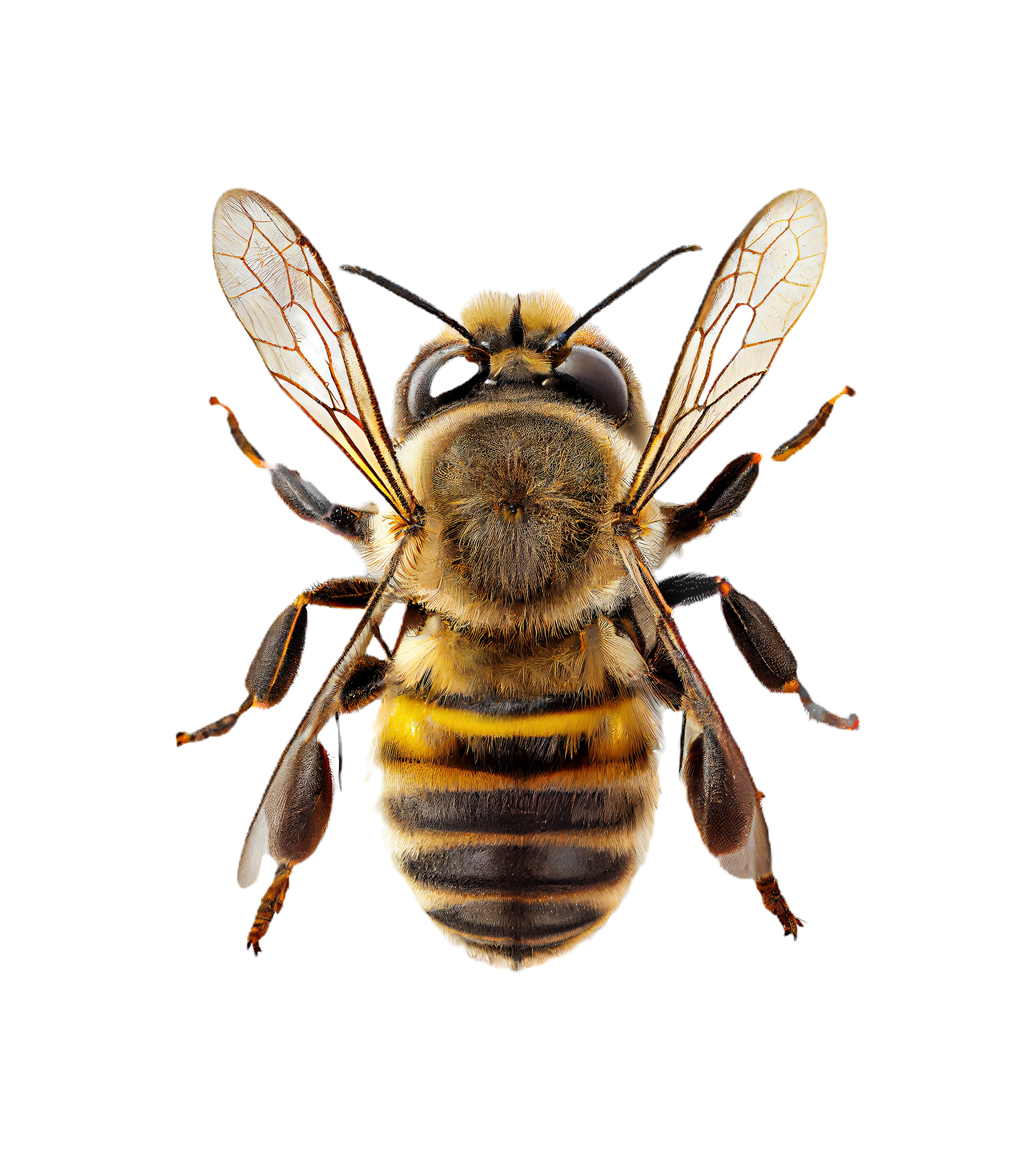
Burzyan Wild Bees
This specific type of bee is of the Russian honey bee species is a descendent of the European black bee (Apis mellifera mellifera), which has formed after millions of years of geographic isolation. A Unique gene pool of the Burzyan honey bees has been monitored for the last 20 years.Burzyan wild honey bees are declared as rare species by the state of commission of the Russian federation. They add a unique enzymes to the honey due to their extreme resistance to diseases and harsh cold.
Why Burzansky Wild Honey?
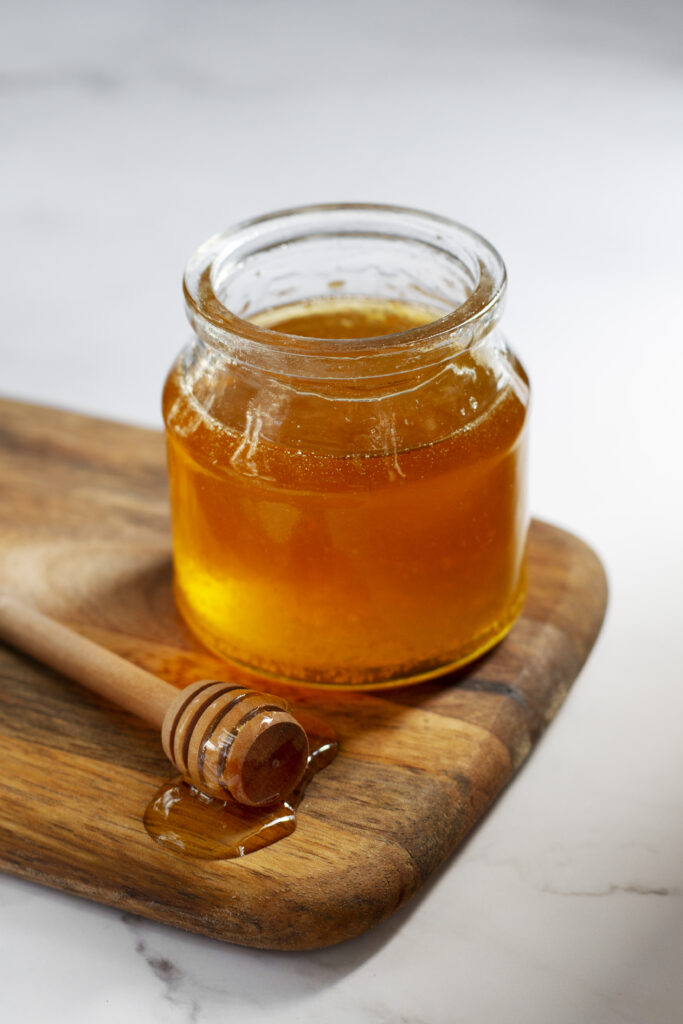
Raw, untouched and unfiltered
Unique Enzyme
Natural Reserve Harvest
Wild Hive Honey: Nature's Pure Elixir

Exquisite Taste and Healing Properties

A Testament to Nature's Harmony

Bashkir Wild Honey

Unique Characteristics

Nutritional Powerhouse

Matured to Perfection
How to Extract Bortevoy Honey
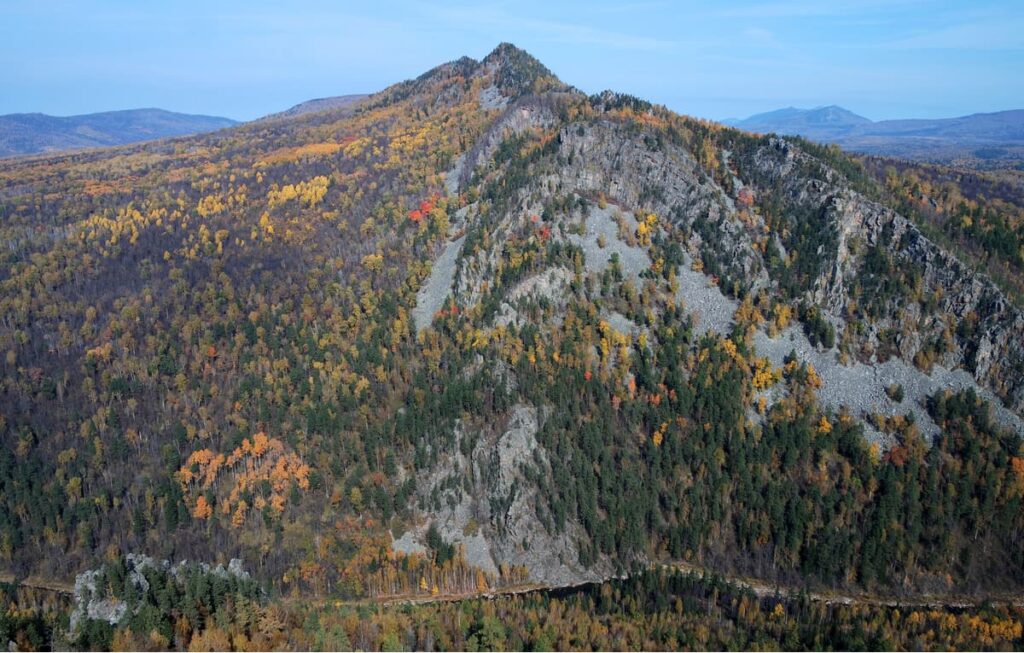
Selecting the Tree
The journey begins with the careful selection of a suitable tree, typically pine, larch, oak, or linden. The chosen tree must be alive and meet specific criteria such as age, diameter, and proximity to essential elements like clear water and linden thickets.
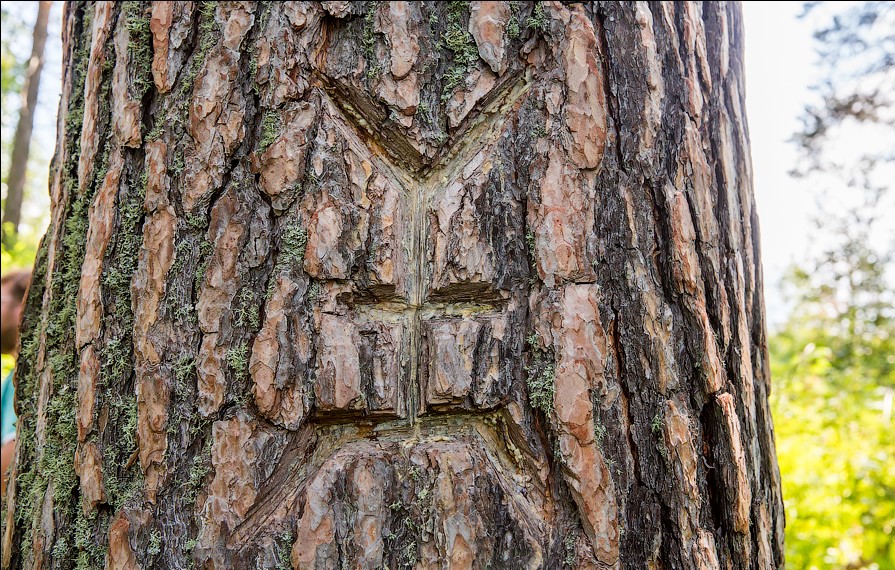
Marking the Bort
Once the tree is chosen, a Tamga, a special brand or sign, is carved onto it to signify ownership and heritage. This unique mark ensures the bort’s identity and lineage, passed down through generations
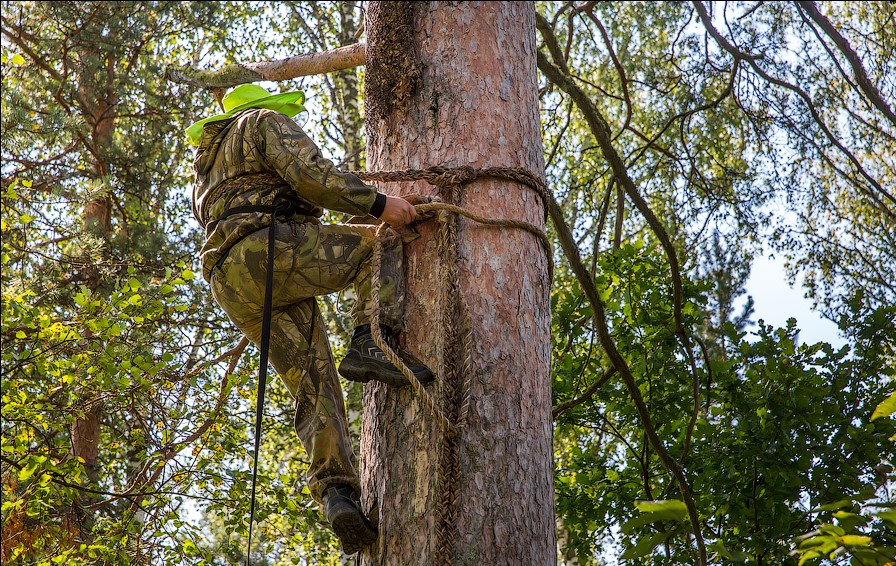
Hollowing the Tree
Using specialized tools, the tree is hollowed out to create the bort, a natural or man-made hollow with a nest of wild bees. The hollow is carefully crafted at a height of 4-16 meters, providing an ideal environment for honey maturation.
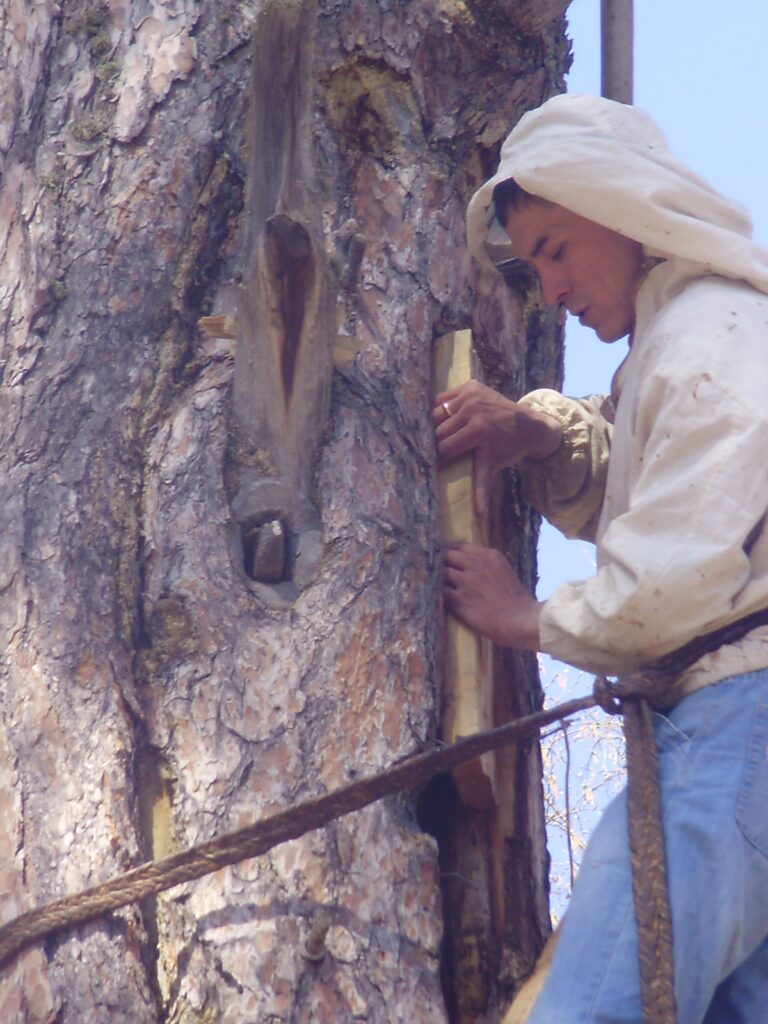
Preparing the Bort
The newly hollowed bort is left to dry for a year or two before bees settle in. Beekeepers may cover it with a board, insulate it with dry grass, or hang protective measures like birch branches or iron nets to safeguard it from forest animals
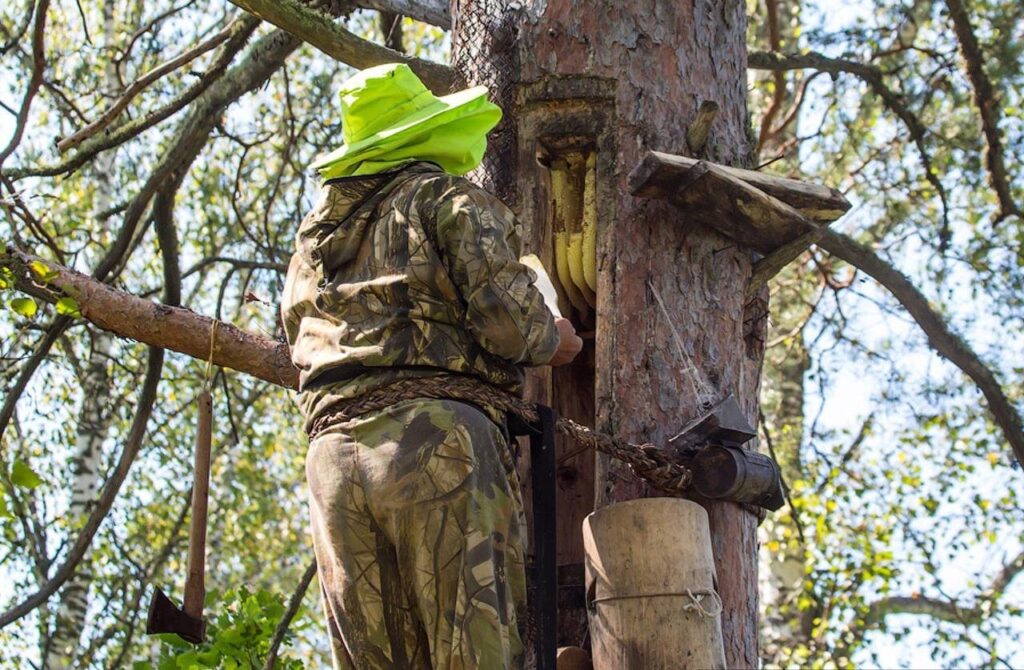
Harvesting the Honey
Once the bort is ready, beekeepers venture into the wilderness, often on horseback, to inspect and collect honey. Honeycomb tongues laden with forest honey are carefully harvested, leaving ample stores for the bees’ winter sustenance.
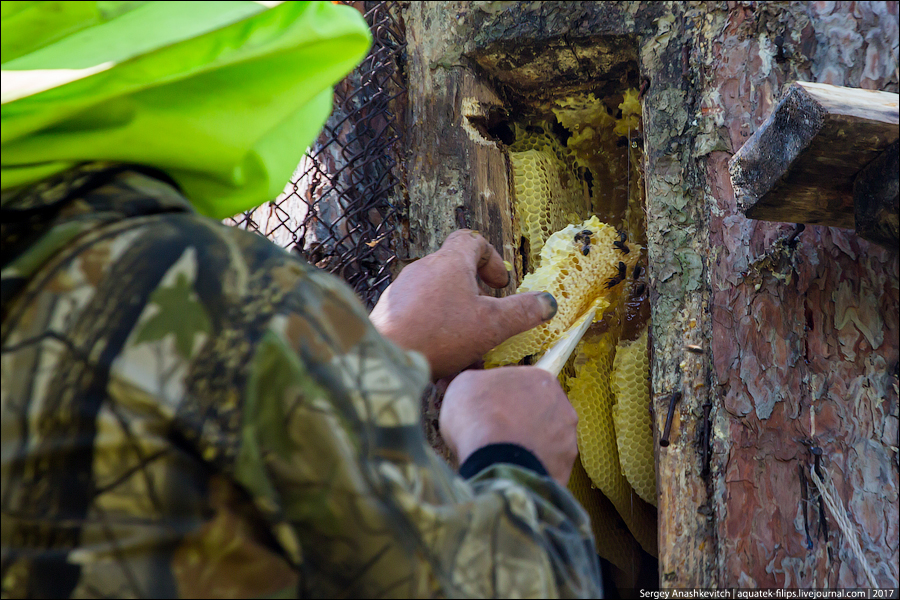
Preserving the Tradition
The craft of bortnichestvo is a cherished tradition passed down through generations. Today, as in centuries past, beekeepers honor nature’s rhythms — respecting the wild bees and the ancient forests they call home.
